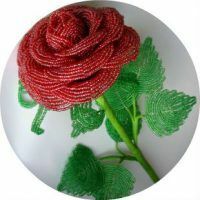
Beads - a fairly common ornamental material, thanks to which a lot of both surprisingly beautiful and enough useful things were created. And hardly in the creative environment there were needlewomen who would never work with beads. And there is nothing surprising in this, because there are enough techniques in which you can apply this material, for example, beadwork, mosaic, embroidery.
- Rose compound
- Weaving of roses from beads
Rose compound
Consider the most popular variant of flower making - weaving of compound roses.
For work we will need:
- pink and green beads №10;
- thin wire for flower parts;
- thick wire for the legs;
- Floral tape, thread or corrugated paper.
At the first stage of the pink beads you need to weave 11 petals for a rose. We will use two techniques of weaving:
- "Frame with a central row"( 2 petals of 20 beads in 9 rows and 2 petals of 20 beads in 11 rows).This method is very similar to the French technique of braiding with arcs, when the necessary number of rows is being built around the main axis of the part.
- "Modified skeleton"( 7 petals of 20 beads in 15 rows).This is a similar technique of weaving, the main difference being the ability to remove the wire from the front of the petal, which is very convenient when decorating a flower.
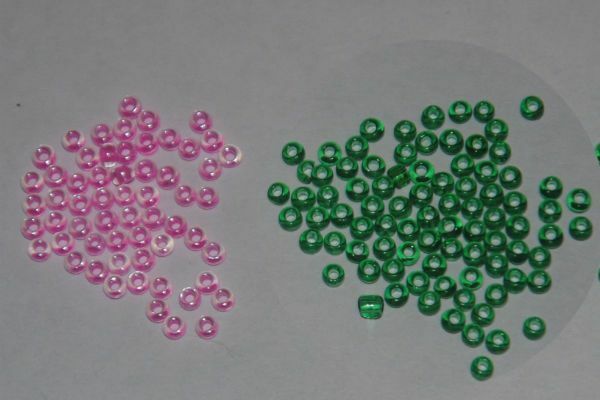
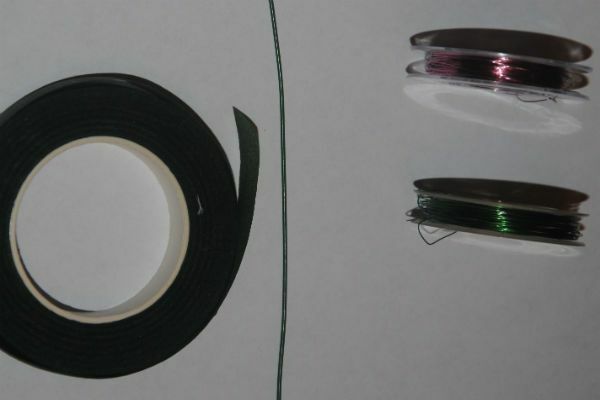
The tips of the petals are rounded. This effect can be obtained by twisting the wire around the main axis at an angle of 90 degrees.
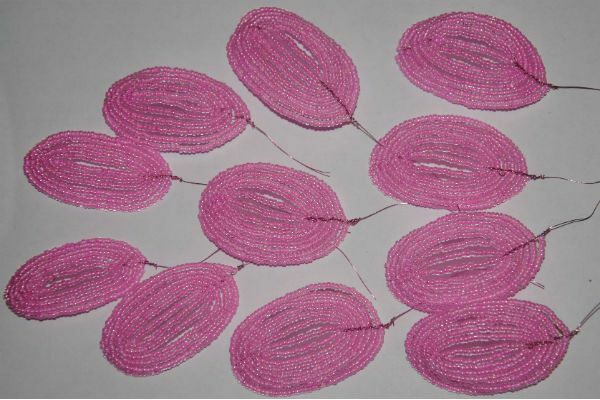
If you want to weave a pink bud, then larger "modified" petals will need less, about 3-5 pieces.
Now we will collect a flower cup from a green bead.

For this, in the technique of "Continuous circulating loops", 5 double loops should be made starting with a loop of 2 centimeters. The upper loop should be twice as long as the inner loop, so that it can be pulled out in the form of a pointed leaf.
It will be necessary to weave a twig from 5 parts of different sizes:
- 1 sheet with a frame of 20 beads in 11 rows,
- 2 sheets with a frame of 15 beads in 9 rows,
- 2 sheets with a skeleton of 15 beads in 7 rows.
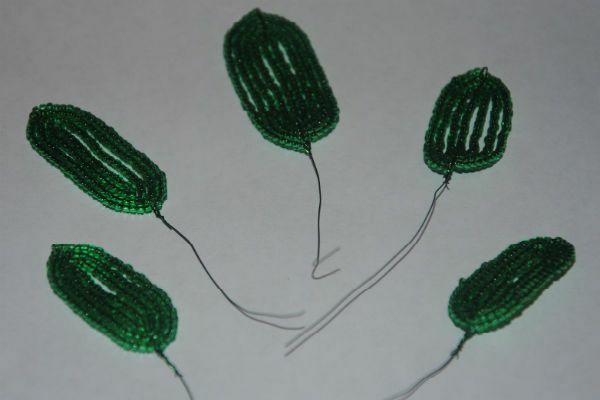
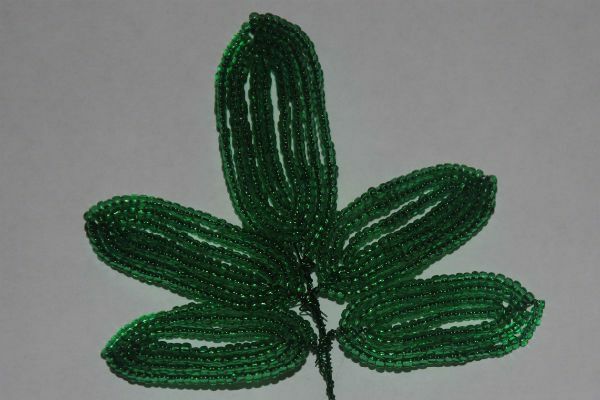
The ends of the sheets must have a pointed shape. This effect can be achieved by twisting the wire around the main axis at an angle of 45 degrees.
After you form each sheet, you need to put together a twig. Around the largest sheet first twist in pairs 2 medium, and then 2 smallest.
If your rose has a long stem, it is advisable to make 2-3 of these branches.
All the parts are ready, you can collect hand-made articles.
Using a wire, to the harvested flower leg, one at a time, fasten the petals, first the smallest ones, folding them with each other on the wrong side. Then the petals are larger so that their faces are directed from the center of the flower, and at the end are the largest, made in the technique "Modified Skeleton."
We finish the design of the inflorescence, attaching a cup to the stalk.
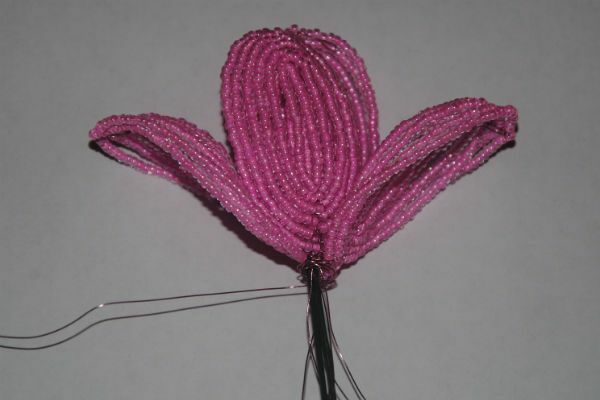
After this, wind the stalk with a floral tape or a green thread, and at about its middle, attach a twig with the leaves.
Now spread out all the details and give them the desired shape.
Your first composite rose is ready.
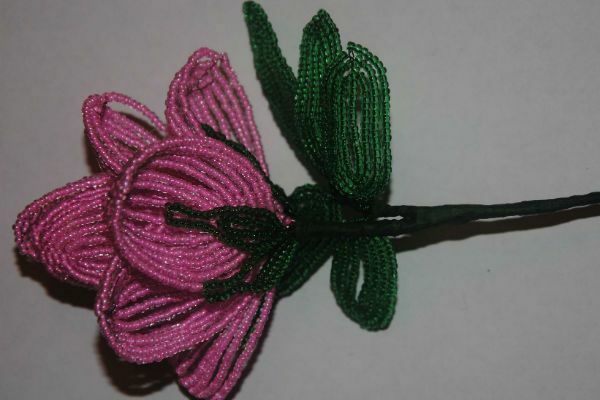
It will become a wonderful decorative element and will always attract special attention.
to the table of contents ^Weaving of roses from beads
Materials needed:
- beads of two colors in size 10/0;
- beads size 15/0 for inner petals;
- beads size 11/0 for outer petals;
- large stone with a hole;
- needle size 11 or 12;
- is a strong yarn.
Take the beads of two colors, dial twice the number of elements, alternating them. The outer and inner circle you will get different in color. We used 10 beads of two different shades of green, that is, in each circle of 5 pieces.
Push the beads down, stopping about 15 centimeters to the end of the thread. Put the thread of the beads on your index finger, wind the needle on the other side. The thread should be carried through all the odd beads: first, third, fifth, seventh and ninth. After that, stretch the needle through the 10 bead, so you put the needle in a suitable position for weaving the next row.
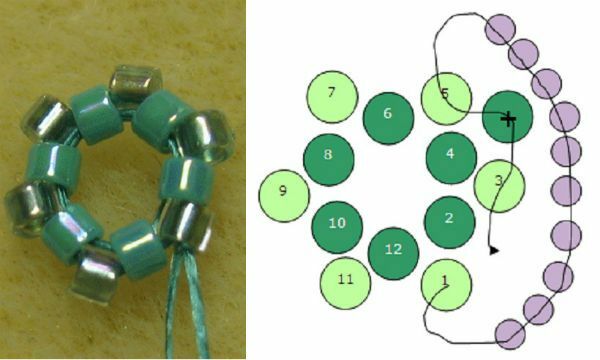
When the middle of the rose is ready, you can start creating petals.
For a start, we'll figure it out in a diagram and prepare the material we need for weaving. For each petal we need the following number of beads: in the first row 10 pieces of size 15/0, in the second row - 8 pieces 11/0, in the third row - 10 pieces 11/0.
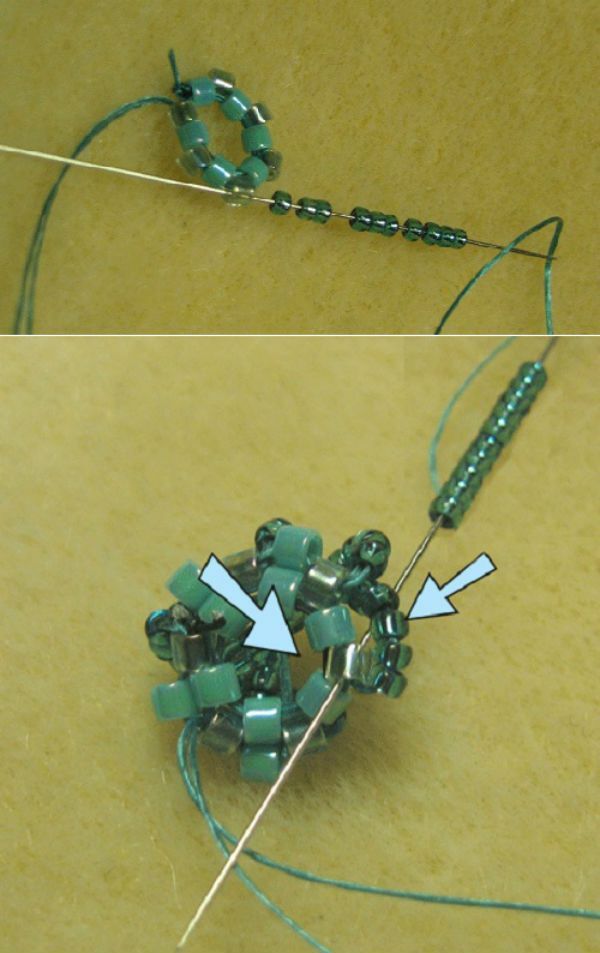
Please note that in each row, the rose produces six petals.
Now in more detail.
To start, type 10 beads of size 15/0 on the thread. From the edge from which the thread retreats retreat five beads, flip the needle and stretch it through the bead. Actions carry out vnatyazhku. In order not to get confused, check with the picture.
To create the fifth, type 10 beads 15/0 and stretch the needle under the first lobe, in the direction of the arrow indicated in the picture.
When you make the last petal, you must pass the needle under the first and second petals. Finish with a bead of center color and tighten well.
Here's how the rose will look after creating the first row of petals.
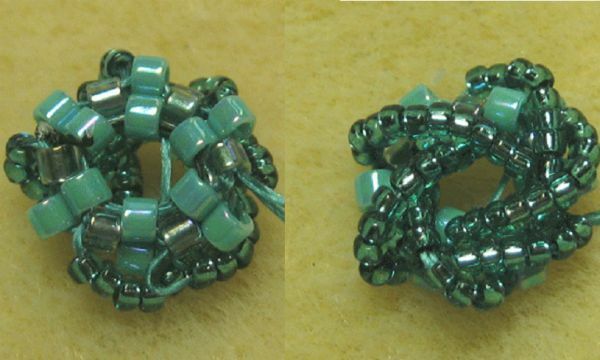
Now you need to attach the central bead, in our case it's a decorative stone with a hole. It should be located clearly in the middle.
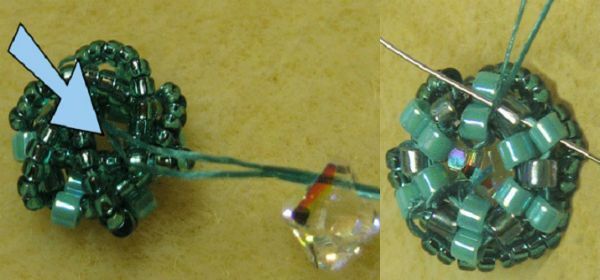
Pass the thread through several beads from right to left. Do as shown in the picture.
Let's go to the second row of petals. Eight beads size 11/0 thread on the thread, and the needle is carried through the bead, which indicates the arrow on the diagram.
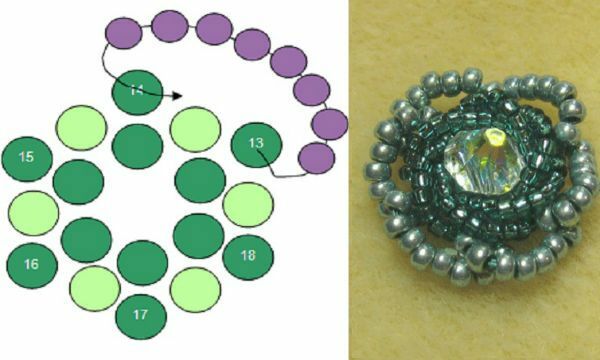
Continue doing the same way by stretching the needle with the beads for the last petal under the first petal before passing the needle through the last bead in the row. Here's how the rose should look after the second row ends.
Turn over and work with beads of light color in the technique of peyote one row, placing the thumb in the center and tightening the thread well. This series will give the rose a conical shape and create a base for the last row of petals.
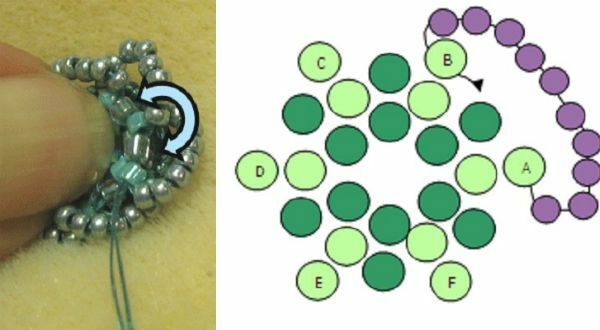
The third row of petals( 10 beads 11/0) do the same as the previous one, placing the last petal under the first one before passing the needle through the last bead.
And now, your rose is ready.
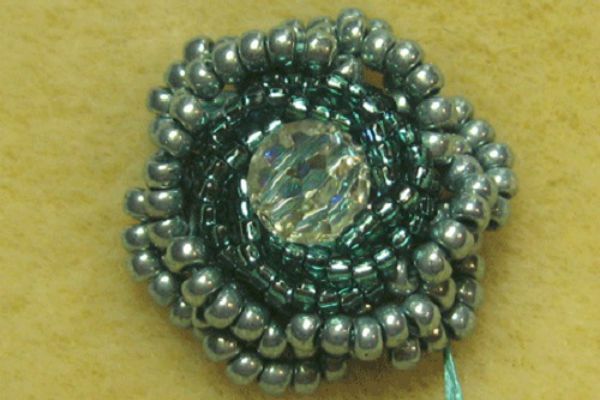
It was easy to weave. And after a little training, and having sufficient stocks of beads, you can make several colors per hour.
In the future, applying and combining any familiar weaving techniques, from such elegant roses you can create any jewelry, earrings, pendants, bracelets or necklaces. Depending on the size and shape of the product, you will need a different number of similar colors.
